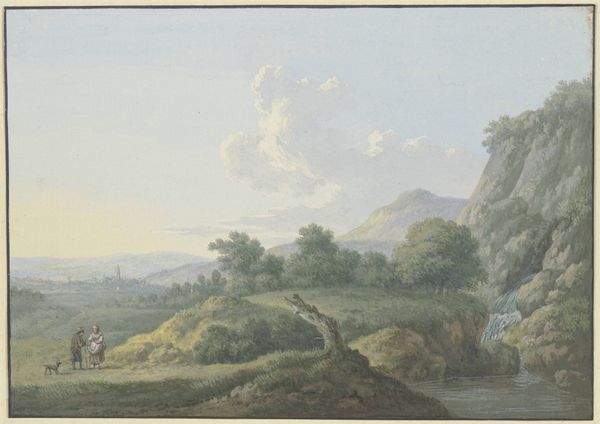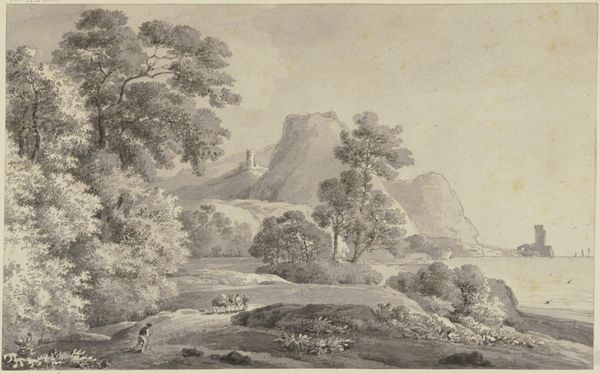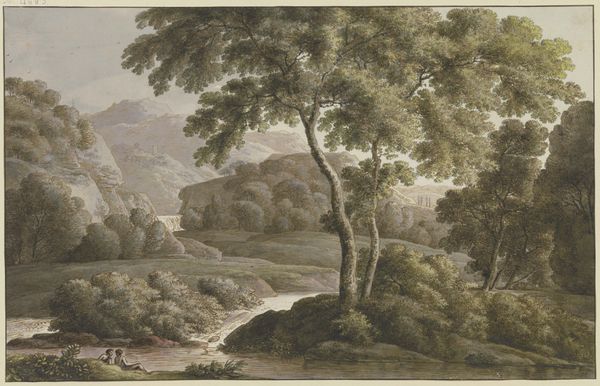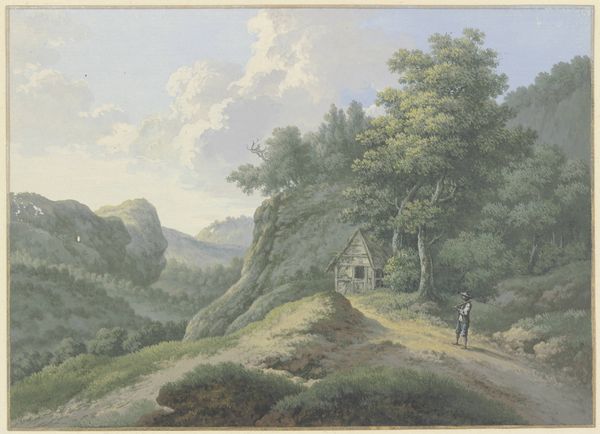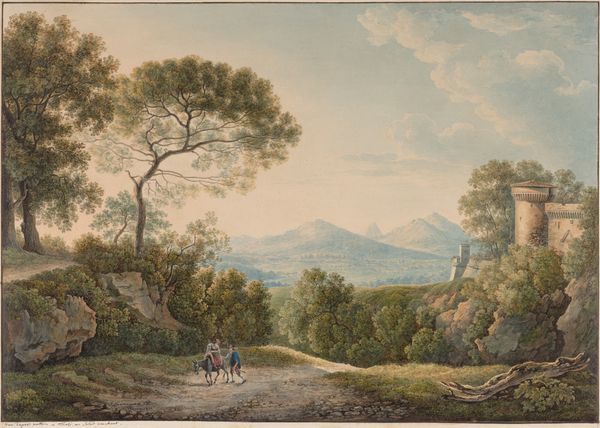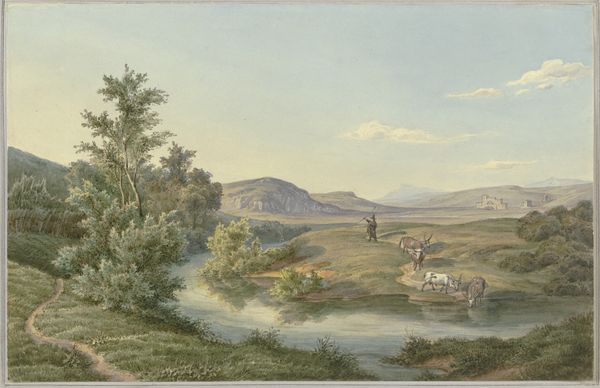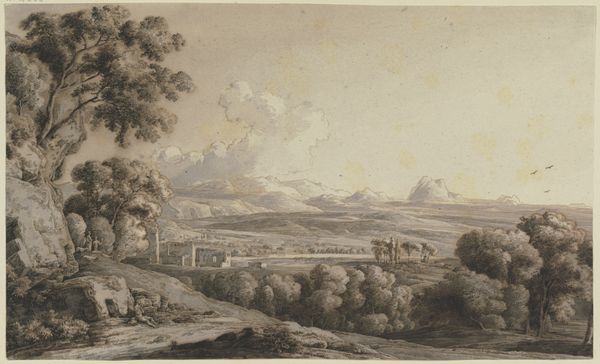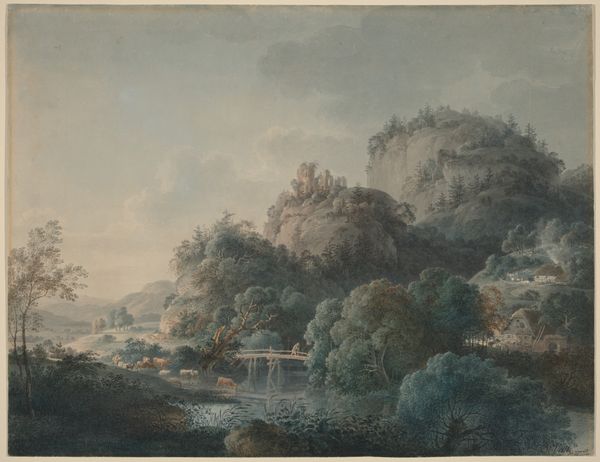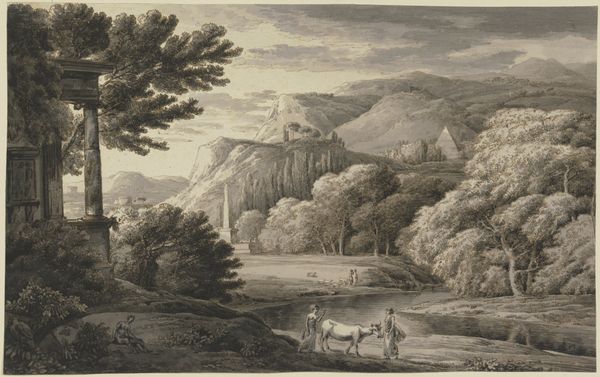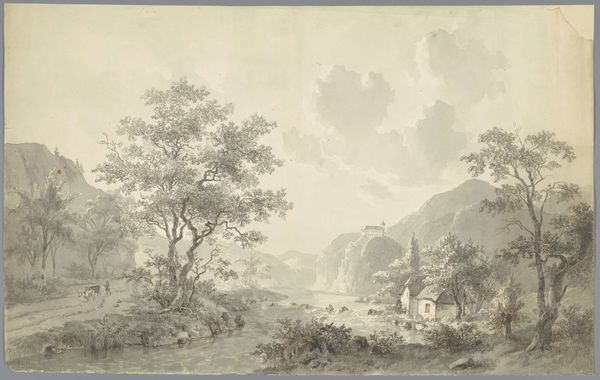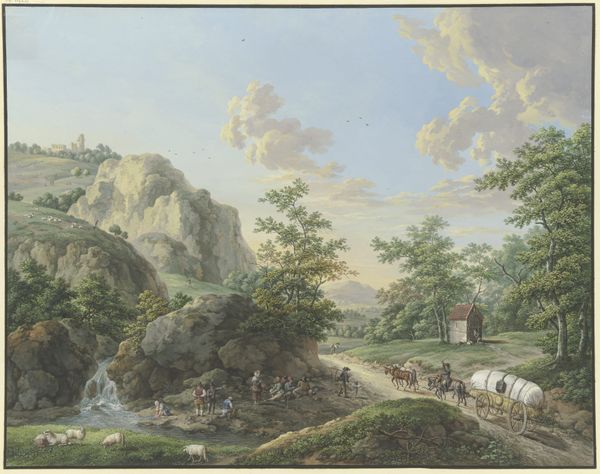
Bergige Landschaft mit einem hohen Felsen, im Mittelgrund zwei Männer bei einem Waldbach rastend
0:00
0:00
drawing, coloured-pencil, tempera, paper, watercolor
#
drawing
#
coloured-pencil
#
narrative-art
#
tempera
#
landscape
#
paper
#
watercolor
#
coloured pencil
#
classicism
#
watercolour illustration
#
watercolor
#
realism
Copyright: Public Domain
Curator: This work, whose creator is identified as Karl Franz Kraul, depicts a “Mountainous Landscape with a Tall Rock, in the Middle Ground Two Men Resting by a Forest Stream”. Editor: It’s quite serene, almost ethereal. The colour palette feels very muted, creating a hazy, dreamlike atmosphere. The size of those men in the landscape, though! So small, making them appear vulnerable. Curator: That's a very interesting take! Indeed, the relationship of humanity to nature plays a major role here, as in much landscape art. It’s rendered primarily in watercolor, tempera, and colored pencil on paper. Think about what choices and possibilities these humble, and widely available materials offered him, as well as how it reflected access in this historical moment. Editor: That material consideration frames the image as something beyond just artistic interpretation, it also becomes about accessibility and what could be made in a very real sense. And it's precisely the use of these seemingly simple materials that contributes to that dreamlike quality I noticed. It allows for such delicate rendering, such translucence. And in relationship to gender theory, one might think about who had access to those spaces, whether men or women... and how. Curator: Absolutely. And speaking of access, remember this wasn't a universally shared experience, so for some, it probably reinforced a vision of class identity, both imagining what is within reach, and cementing who is granted leisure time in which to simply enjoy the natural world. How do the forms—those rocky outcroppings and that cascade of water—speak to the emerging cultural and scientific categorizations and classifications of the day? Editor: Now that’s interesting. It pushes us to think about the labor required to "capture" the landscape and what sort of labor enabled someone like Kraul to spend time rendering it. There’s an implicit economy embedded even in such seemingly passive scenes. I wonder too how that consumption of land differs for Kraul, an artist with presumably certain levels of financial means, compared with how that same process would appear to working class people and the material choices involved to be there, period? Curator: I'm intrigued by that. Considering Kraul's composition choices with the use of these specific materials is something to reflect upon. Editor: It certainly moves beyond simply appreciating a beautiful vista, and raises very real-world material considerations for those accessing them, indeed.
Comments
No comments
Be the first to comment and join the conversation on the ultimate creative platform.
